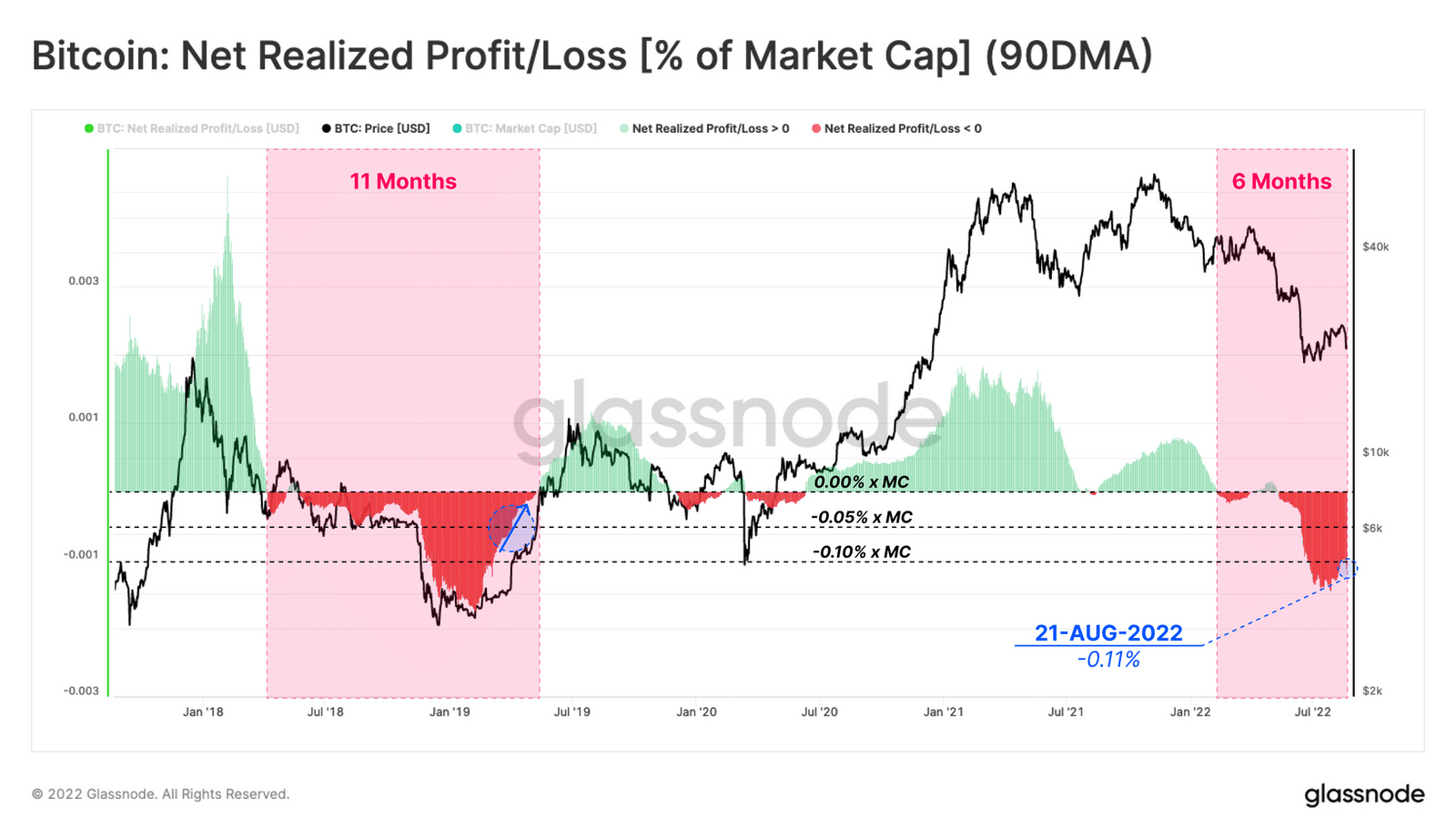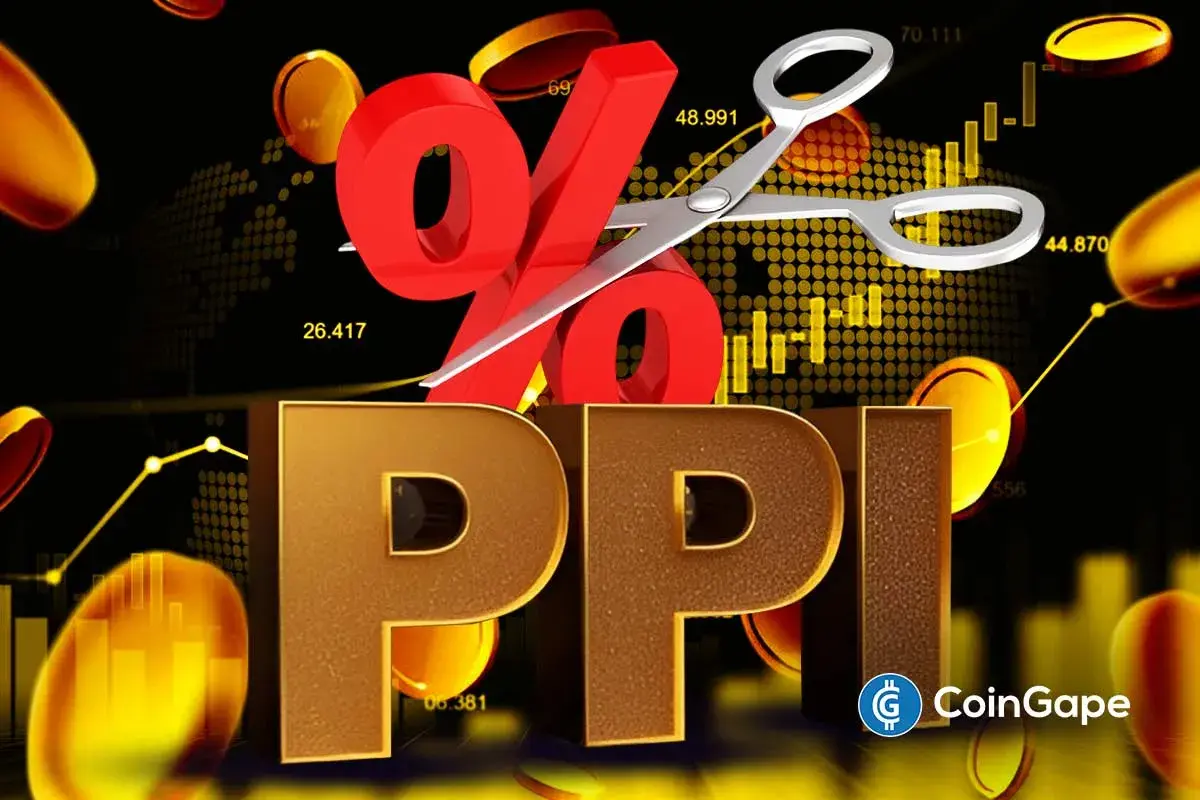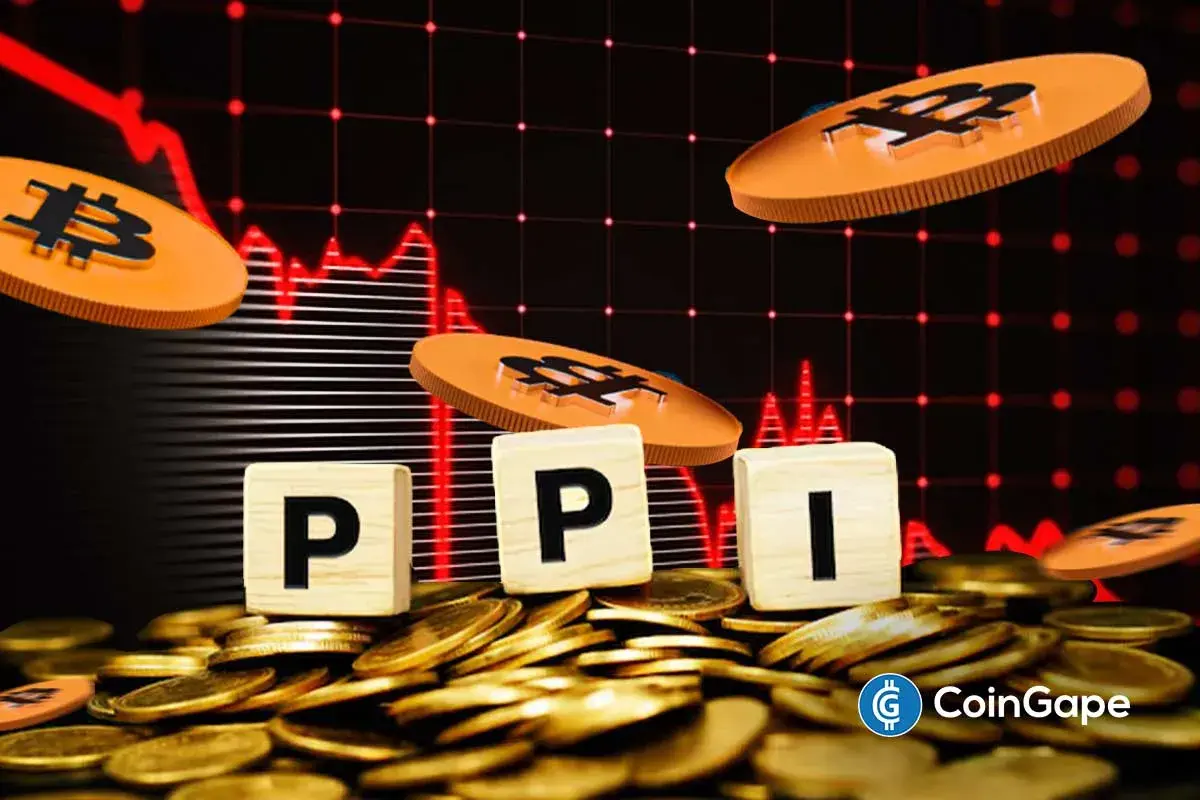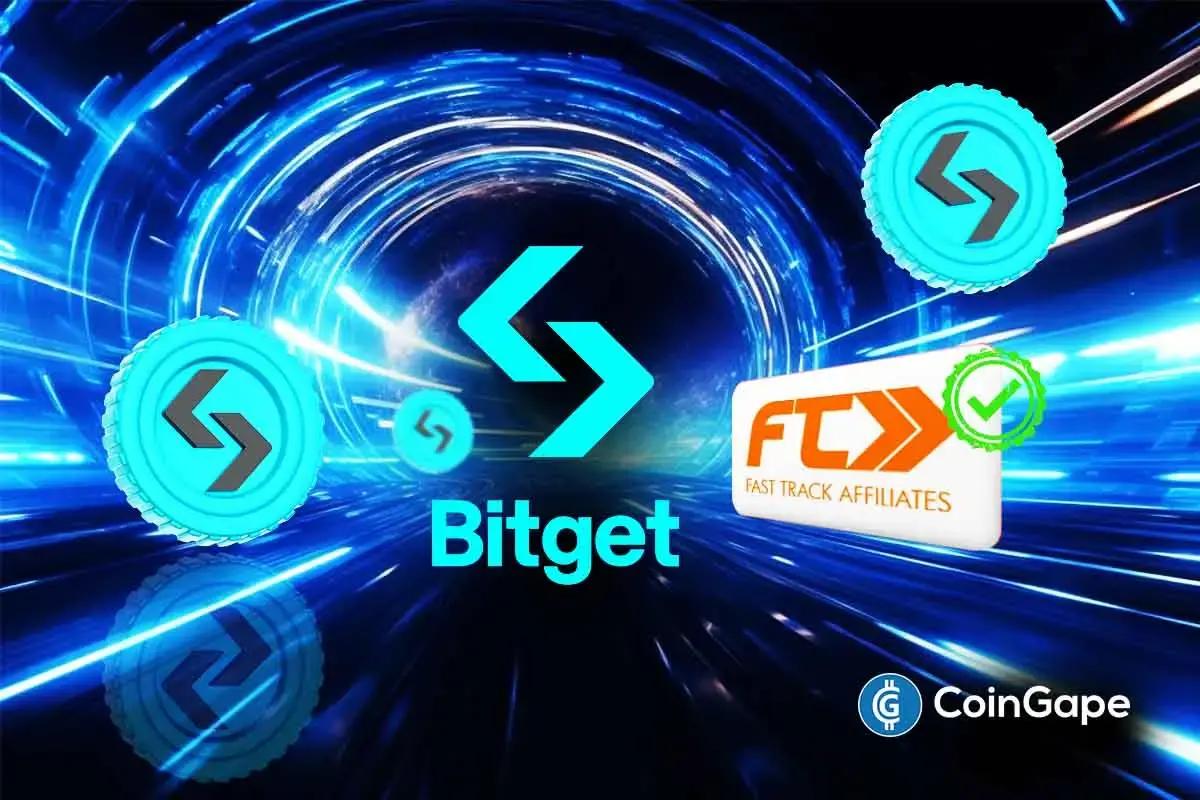These On-Chain Metrics Explain the Underlying Weakness in BTC Rally

The brief rally in Bitcoin and the broader cryptocurrency market has come to a halt as all selling pressure mounts. Bitcoin’s (BTC) price has corrected more than 12% over the last week currently trading around $21,000.
On-chain data provider has shared a detailed analysis explaining the underlying weakness during the relief rally. Glassnode points out that the participation of retail players was lacking during this relief rally citing the total number of small transactions with value less than $10,000.
As per the Glassnode data, when the BTC price jumped back to $24.4K, the transaction volumes for retail investors were still heading lower. This lack of retail demand marks the underlying weakness in the market.
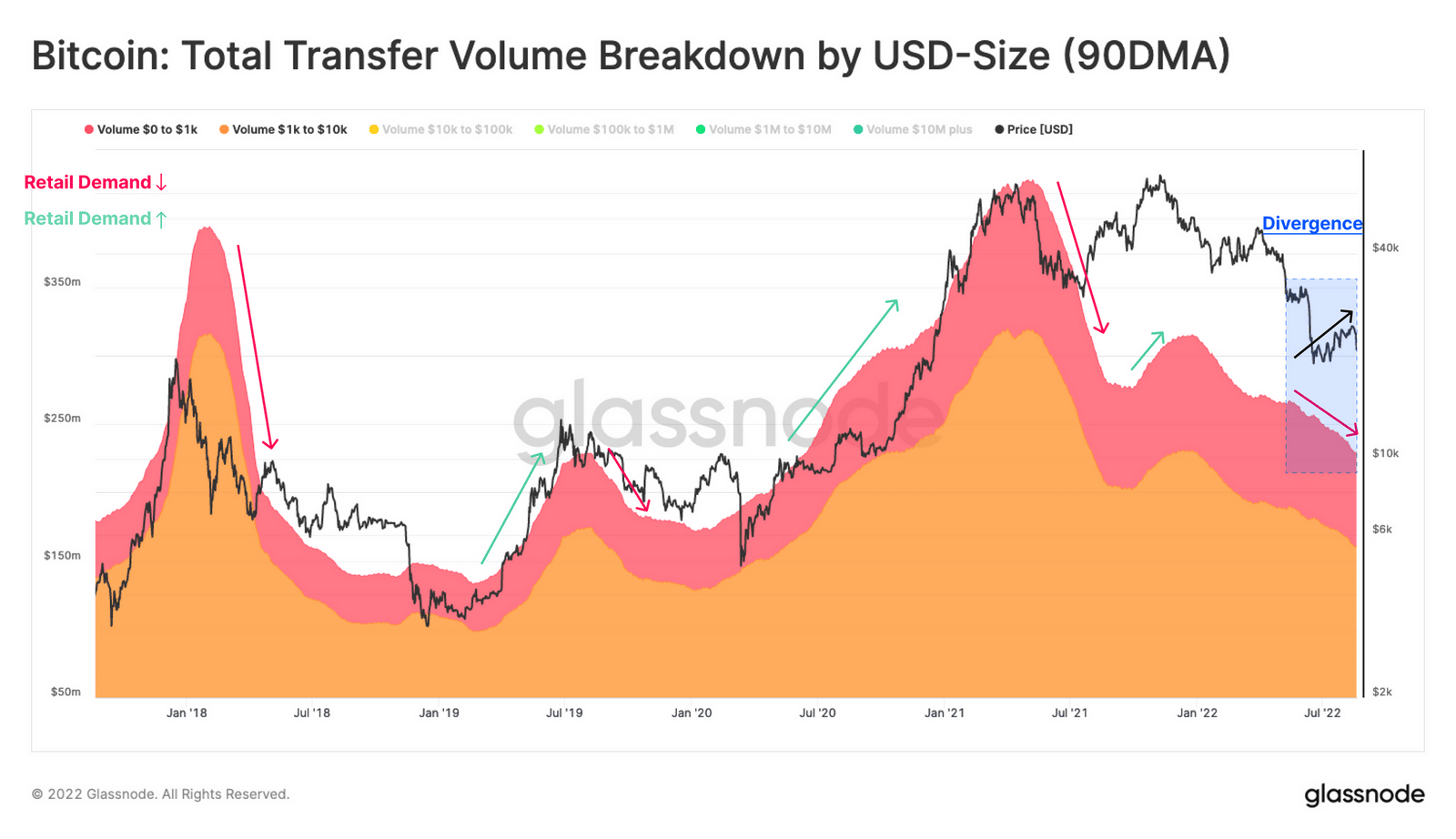
Comparing Exchange Inflows and Outflows
On-chain data provider Glassnode explains the cyclical behavior of Bitcoin prices to the USD-denominated inflows and outflows at the exchanges. The data provider states:
Exchange flows have now declined to multi-year lows, returning to late-2020 levels. Similar to the retail investor volumes, this suggests a general lack of speculative interest in the asset persists.
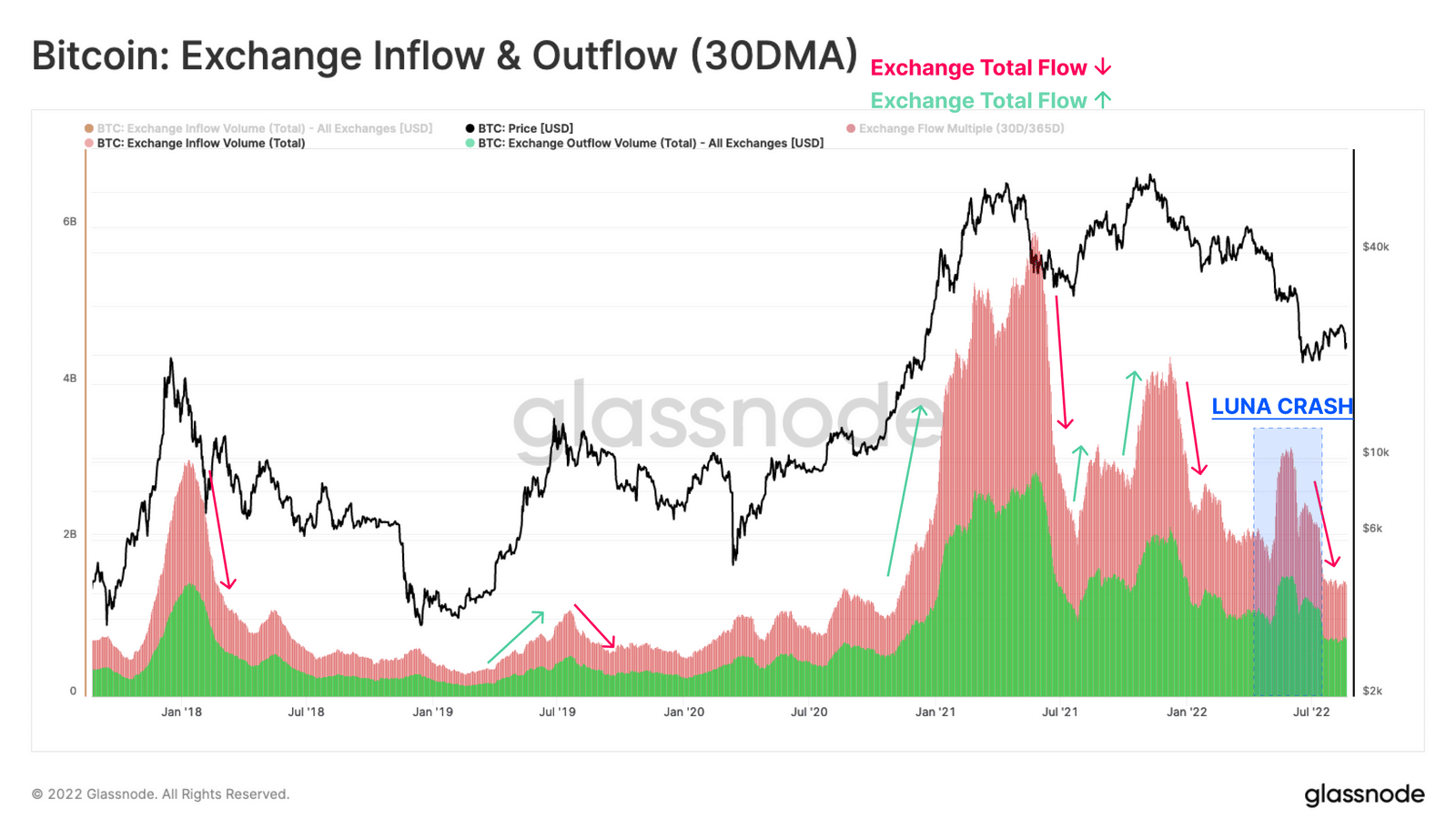
One thing is clear, with the lack of retail participation, the network demand and activity on the Bitcoin blockchain were lacking severely. Furthermore, Glassnode points out at the Net Realized Profit/Loss (90DMA) explaining that sellers are yet not exhausted in the recent bear market.
Looking at the last bear cycles of 2018-2019, the Net Realized Profit/Loss (90DMA) should return to neutral to suggest any price recovery.
Finally, Glassnode speaks of the Short-term holders’ SOPR (90DMA) which explains the ratio of investors’ selling prices relative to their buying prices. The important threshold here remains the cross-over of 1. Any break above it would indicate a return to profitable spending. As Glassnode explains:
Following the capitulation from the November ATH, short-term holders (top buyers) realized heavy losses, causing a sharp drop in Short-Term Holders SOPR (90DMA) below 1. This phase is usually followed by a period of low conviction, where the break-even value of 1 acts as overhead resistance.
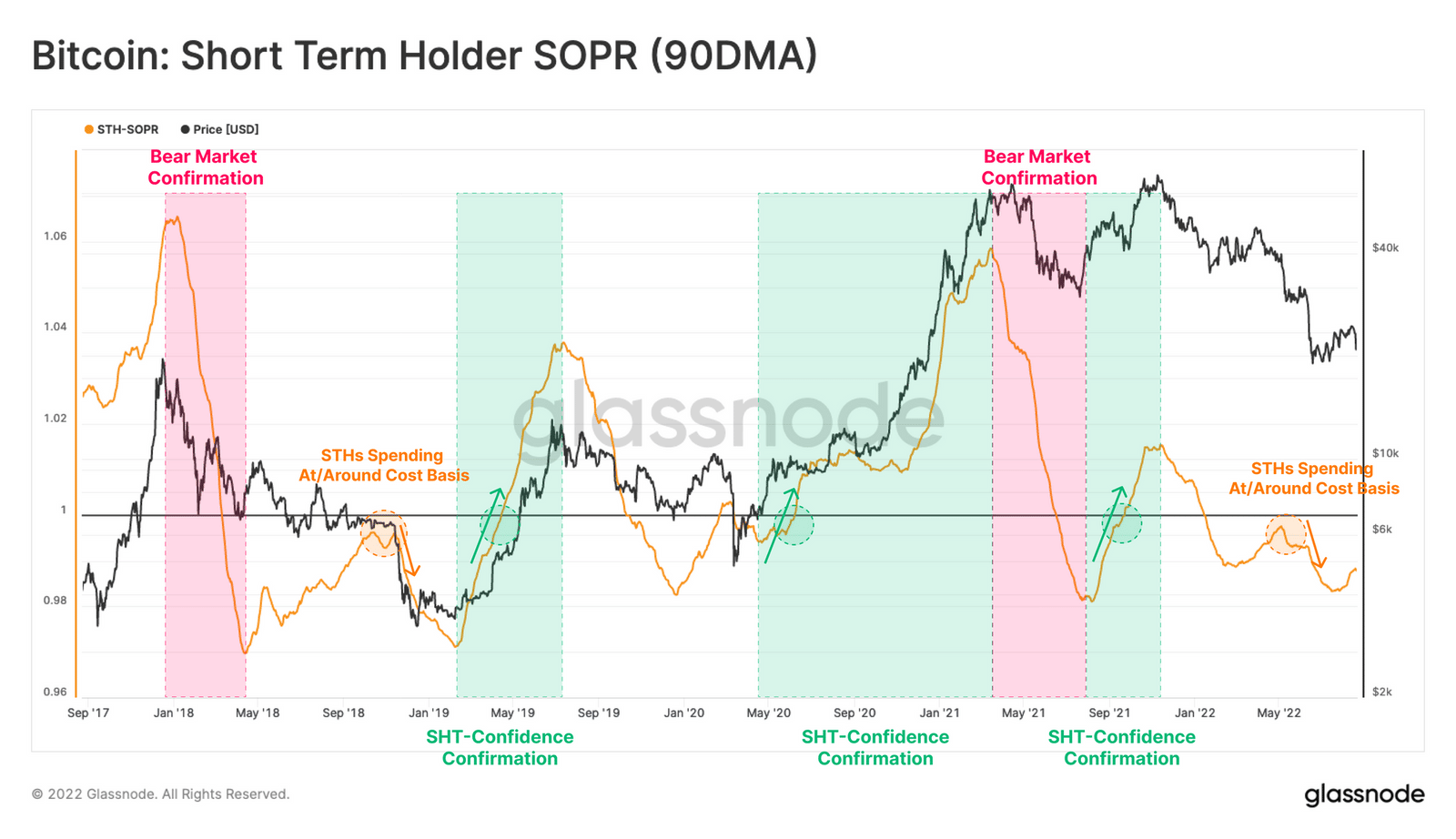
- December Fed Rate Cut Odds Surge To 85% Following PPI Release
- Breaking: Crypto Market Gets Major Boost as Ukraine Agrees To Trump’s Peace Deal
- Breaking: U.S. PPI Inflation Rises 2.7% YoY, Bitcoin Falls
- Bitget Unveils Fast-Track Affiliate Approvals And New Creator Earnings
- Binance’s Changpeng Zhao Sued by Hamas Victims Over Terrorism Funding
- Sui Price Surges 12%: Could This Mark the Start of a Bullish Trend?
- Is Bitcoin Price Set for Major Recovery as December Rate Cut Chances Hit 80.9%?
- Solana Price Jumps as Bitwise ETF Sees Record $39.5M Inflow: Targeting $150 Next?
- Crypto Market Surges Today; Is a Bigger Recovery Coming Next?
- 3 Signals Hint Shiba Inu Price Can Rebound Soon
- Top 3 Price Prediction: ETH, XRP, and DOGE Show Signs of Bullish Reversal

